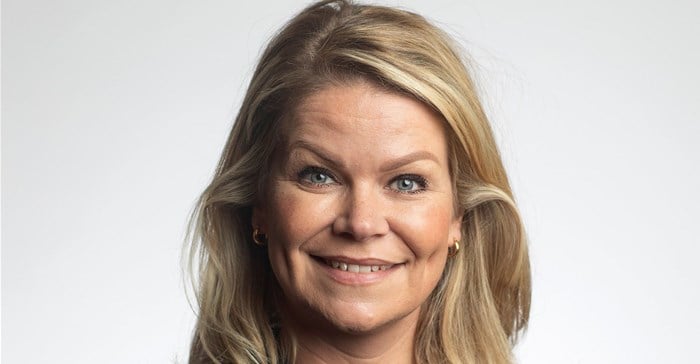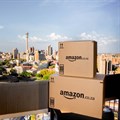
Subscribe & Follow
Advertise your job vacancies
Jobs
- Intern/Junior Account Manager Johannesburg
- Senior Growth Manager Johannesburg
- CRM and Direct Marketing Manager Cape Town
- Agency Lead Centurion
- Digital / Online Campaign Manager Johannesburg North
- Campaign Coordinator Cape Town
- Senior Trade Marketing Manager Johannesburg
- Experienced Model Booker (Agent) Cape Town
- B2B Marketing Consultant George
- Senior Marketing Coordinator Johannesburg
The importance of a retail media strategy for e-commerce
With 74% of global consumers starting their buyer’s journey on the Amazon platform, brands need a solid retail media strategy to support their e-commerce strategies.

Image supplied. Incubeta's Martine Kevelham shares insight about why retail media is important and how it has helped other regions where Amazon has recently launched
However, too few brands have properly considered how to do this and this oversight could end up hurting them.
Retail media, sometimes referred to as commerce media, is when a retailer like Amazon or Walmart offers advertising capabilities, the same way a publisher does.
That ad for a pair of sneakers that catches your eye just as you’re about to checkout of your favourite online marketplace? That’s retail media at work.
Retail media: The current buzzword
Retail media is the current buzzword in digital marketing around the world. It is the best way for e-commerce brands to get as close as possible to the consumer in the digital isles and as they make their final decision in their online retail journey.
It’s not surprising that decision-makers don’t want to miss the boat, and the current global surge in retail media ad spend is being fueled by the phenomenal US growth over the last few years.
Retail media ad spend in the US amounted to $45.05bn in 2023, surpassing ad spend on connected TV and rapidly closing in on traditional TV spend.
eMarkerter has predicted that retail media ad spend will make up over one-fifth of the total US ad spend by 2027, forecasting faster growth than either search or social.
Chasing the Amazon algorithm
As local brands wrap their heads around how to grab any competitive advantage on Amazon, Kevelham says first-mover advantage will be vital for brands, but warns that getting things right from the start is a must.
Adopting a test-and-learn approach to retail media allows brands to quickly get a sense of how best to manage ad spend on the platform. Certain categories can be particularly tricky, such as electronics and children’s toys which are very fast-moving.
Kevelham also advises that getting involved in advertising early on means brands can benefit from a lower cost per click as the algorithm begins its learning in the early phases of the marketplace’s operations, and this allows brands to play around without investing too much money.
A phased approach
Taking a phased approach means that brands of all sizes can get onto the platform and begin participating early on.
It’s very important to Amazon to have local brands on the platform as it gives it credibility. We saw in the Nordics and Europe that many recognizable local brands were present, even if they only launched with their fast-moving products, choosing to go with what they knew would move quickly and then gradually adding more products over time.
Many local brands used the Amazon launch as an opportunity to reinvent themselves and made sure they were first to market when it went live.
However, Kevelham warns that well-known brands should not be complacent.
Companies that have invested in great content, good SEO and have bought advertising on the platform will appear above the fold and customers seldom search brand names, but rather products and won’t bother scrolling past the first few paid-for results to reach the organic results below the fold.
Measurable growth from the start
Retail media and platforms like Amazon require a specialist to help brands get their strategy right from the start.
But this doesn’t mean brands can’t work with a trusted partner to build up their own in-house teams over time and Kevelham says this is how many brands have built a successful marketplace business.
There is no successful way of working with these marketplaces without the proper tooling.
You need to be measuring your effectiveness 24/7.
Calculating down to a product level how much you should be investing to reach profitability requires a specialist with the right tooling and experience and these partnerships are the ones that are really paying off as the marketplace takes off in a region.
About Martine Kevelham
Martine Kevelham is the director of sales Northern Europe at Incubeta.Related
Q1 market turmoil: Tech giants hit hard by Trump’s deregulatory plans 1 day Warc study shows growth this year but still downgrade of almost one percentage point 28 Mar 2025 EXCLUSIVE: Scopen research - Be integrated, AI-powered and strategic, or be left behind 20 Mar 2025 Social media's impact: Driving business strategies from marketing to ROI 18 Mar 2025 Unlock hidden revenue: How to turn your data into a profit powerhouse 18 Mar 2025 The TV licence is dead! Long live the streaming levy - or not? 17 Mar 2025















